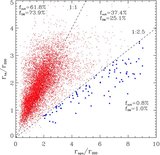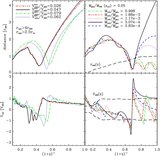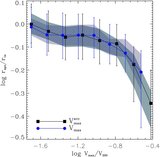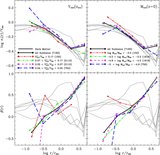Image Details

Caption: Figure 4.
Black dots show the position, at z = 0, of particles belonging, at accretion time, to the most massive subhalo of the group shown in the right-hand panels of Figure 3. This subhalo has been fully disrupted in the potential of the main halo. Large circles show the position of the center of mass of the other (surviving) subhalos in the group. Curves show the evolution of each of these subgroups since accretion. Note how the surviving subhalos align themselves with tidal streams stripped from the main subhalo during the disruption process. The "ejection" of subhalos is thus due to the same mechanism that leads to the formation of outgoing tidal tails in a merger event and should occur naturally during the tidal dissociation of any bound group of subhalos.
Copyright and Terms & Conditions
© 2009. The American Astronomical Society. All rights reserved.










